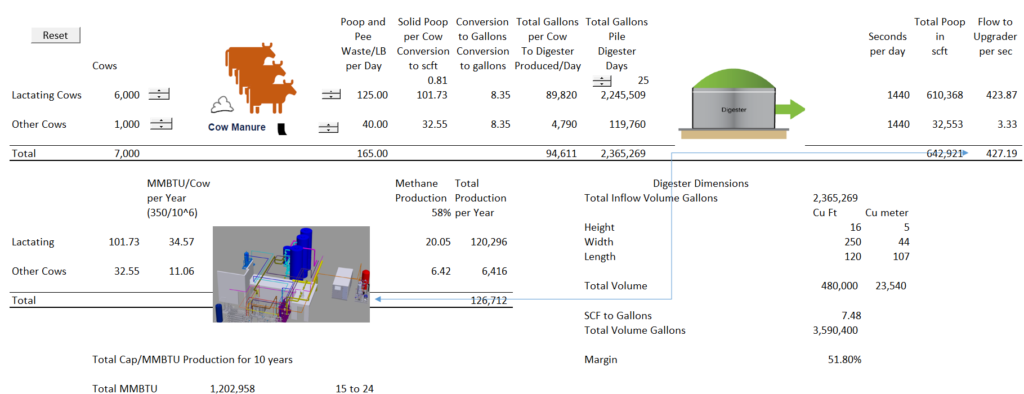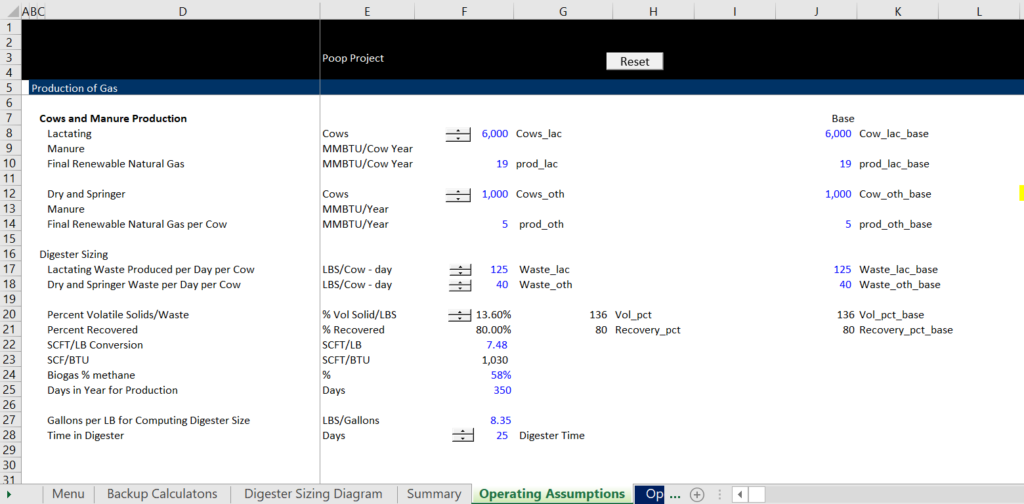In evaluating biomass projects, I think you should understand a few conversions. Ultimately you want some measure of energy to input into an electricity plant or to transmit into a pipeline. In this page I show some examples of how make some conversions and then create a biomass model. As I have some basic problems with converting things, I need to be explicit as to how the projects work. I make a diagram as illustrated below to show how the project works. Then you can use various techniques to see what happens when the resource changes. As with other modelling issues, my general philosophy is that you should not be afraid to see how things work. You can think of some aspects of biomass as similar to wind and solar. You need to start with the level of resource and study it carefully. You can even think about the raw resource like the amount of solar or wind and then think about the how the resource is adjusted depending on the type of equipment is used with losses and leakage.

One type of biomass project is to use cow manure to produce natural gas. You can imagine the environmental benefits of these projects as inputting methane into the atmosphere is a factor of something like six times as bad as carbon dioxide. In the diagram below which is part of the model, I try to show how the cow poop can be converted to natural gas. I was surprised to learn that in terms of pee and poop, the cows produce 125 pounds per day. This volume can be adjusted to remove liquids (pee) and to compute the energy (volatile solids). If it is measured in square feet, you can try to remember that an MMBTU of gas is about the same as MCF which is 1,000 cubic feet. So you leave the pee and poop in a big pile in some kind of lagoon or digester. If it is a lagoon, you must cover it. As with any model, keeping careful tack of the units is essential.



